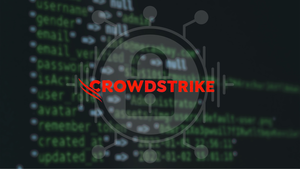
The S&P 500 has recently achieved a series of unprecedented record highs, largely propelled by an intoxicating blend of investor enthusiasm for artificial intelligence (AI) and the pervasive expectation of impending Federal Reserve interest rate cuts. This remarkable ascent, however, sparks an urgent question: is this AI-fueled rally sustainable, or are we witnessing the early stages of a speculative bubble reminiscent of past market frenzies? The market’s current trajectory, heavily influenced by a concentrated group of mega-cap technology companies, holds significant implications for investors, public companies, and the broader economic landscape.
The AI Juggernaut: What Happened and Why It Matters
The S&P 500's journey to new heights has been nothing short of spectacular. Throughout 2024 and into 2025, the index repeatedly breached previous records, culminating in its 25th record closing high of the year by September 2025. This surge, with the index advancing to 6,532.04 on September 14, 2025, represents a significant upward movement of over 32% from its low on April 8, 2025. This sustained performance, mirroring only one other period since 1957, the late 1990s dot-com boom, underscores the extraordinary nature of the current market environment.
At the heart of this rally lies the "AI Revolution." Companies deeply embedded in AI development and infrastructure have experienced explosive growth, leading the S&P Kensho Artificial Intelligence Enablers & Adopters Index to significantly outperform the broader market. Key players include NVIDIA (NASDAQ: NVDA), whose stock soared by nearly 150% in the first half of 2024, briefly making it the largest company in the S&P 500. Its near-monopoly in data center GPUs and partnerships with OpenAI and Oracle (NYSE: ORCL) highlight its foundational role. Oracle itself saw its stock experience its biggest rally in 33 years after announcing a massive surge in AI-driven cloud computing demand. Microsoft (NASDAQ: MSFT), leveraging its investment in OpenAI, has integrated AI across its products, while Alphabet (NASDAQ: GOOGL) (Google’s parent company) achieved a $3 trillion market capitalization, driven by renewed optimism around its AI offerings. Even memory and data storage providers like Micron Technology (NASDAQ: MU), Seagate Technology Holdings (NASDAQ: STX), and Western Digital (NASDAQ: WDC) have seen significant gains due to the insatiable demand for AI data centers. Initial market reactions have been characterized by cautious optimism and "risk-on" sentiment, a blend of euphoria over AI's potential and underlying concerns about stretched valuations and market concentration.
The AI Divide: Winners and Those Left Behind
The AI-driven S&P 500 rally has created a clear bifurcation in the market, propelling some companies to unprecedented valuations while leaving others struggling to keep pace.
The Proliferating Winners: Leading the charge are the direct enablers and beneficiaries of AI. NVIDIA (NASDAQ: NVDA) remains a dominant force, its GPUs being indispensable for AI training and deployment, driving its market cap towards $4 trillion. Microsoft (NASDAQ: MSFT) has cemented its position with its Azure cloud services heavily leveraged by AI workloads, further bolstered by its strategic investment in OpenAI. Oracle (NYSE: ORCL) has seen its cloud infrastructure business explode, signing massive AI-related contracts, including a reported $300 billion deal with OpenAI. Palantir Technologies (NYSE: PLTR), specializing in data analytics and AI platforms, saw its stock surge by 340% in 2024, securing major government contracts. Semiconductor companies like Broadcom Inc. (NASDAQ: AVGO) and Taiwan Semiconductor Manufacturing Company (NYSE: TSM) are also thriving from the skyrocketing demand for advanced chips. Even tangential beneficiaries like Dell Technologies (NYSE: DELL), with its "AI Factory" initiative, and utility companies such as Vistra (NYSE: VST) and Constellation Energy (NASDAQ: CEG) are seeing their stocks climb, reflecting the massive power consumption of new AI data centers. The "Magnificent Seven" (including Alphabet (NASDAQ: GOOGL), Amazon (NASDAQ: AMZN), and Meta Platforms (NASDAQ: META)) continue to invest billions in AI infrastructure, solidifying their market leadership.
The Lagging and Losing: Conversely, several companies and sectors are finding themselves in the shadow of the AI boom. Traditional software companies like Salesforce (NYSE: CRM), Adobe (NASDAQ: ADBE), and ServiceNow (NYSE: NOW) face investor scrutiny over how AI might disrupt demand for their core products. Small-cap stocks, often lacking the AI-centric tech concentration, are generally underperforming large-cap counterparts, as capital flocks to perceived AI leaders. Companies with inflated valuations and limited revenue, whose business models are more speculative than fundamentally sound, are particularly vulnerable to any shift in investor sentiment. While a tech giant, Apple (NASDAQ: AAPL) has faced criticism for potentially lagging in AI innovation compared to its rivals. More broadly, the "S&P 493" – the S&P 500 excluding the Magnificent Seven – has shown suppressed earnings expectations, highlighting the severe concentration risk in the current market. Sectors without a direct or indirect link to the AI revolution are struggling to attract investment, leading to a relative underperformance and creating a market bifurcation where proactive AI integrators thrive, and slower adaptors face challenges.
Broader Implications: Reshaping Industries and Regulators
The S&P 500's AI rally is not merely a market phenomenon; it represents a profound acceleration of existing industry trends and introduces complex implications across the economic spectrum. AI is now a fundamental driver of digitalization and automation, poised to significantly enhance productivity in finance, healthcare, retail, and manufacturing through hyper-personalization, optimized supply chains, and predictive maintenance. Analysts project AI could add $13 trillion to $16 trillion in market value, delivering nearly $1 trillion in annual net benefits to S&P 500 companies by 2026. This tangible economic contribution, fueled by vast investments in AI infrastructure, distinguishes the current era from past tech booms.
The ripple effects are extensive. A clear competitive divide is emerging, with NVIDIA (NASDAQ: NVDA), Microsoft (NASDAQ: MSFT), and Alphabet (NASDAQ: GOOGL) potentially forming "super firms" that increase market concentration. Companies slow to adapt risk obsolescence. Strategic partnerships are flourishing, as AI developers collaborate with industry specialists, but smaller AI startups face immense competition and high computational costs. Supply chains, particularly for critical AI chips, are experiencing unprecedented demand but are also vulnerable to geopolitical tensions and export controls.
Regulatory bodies are keenly aware of these shifts. Concerns about monopoly power and market concentration in AI-related sectors are growing, leading U.S. and Chinese regulators to scrutinize the uneven control over data, talent, and computational power. Traditional antitrust frameworks are being reevaluated to address the complexities of data control, with calls for enhanced oversight, data portability, and support for emerging firms. Beyond market dynamics, policymakers are grappling with societal risks, including potential job displacement, increased inequality, and the spread of misinformation, pushing for risk-based regulatory approaches to ensure AI's responsible integration.
Comparing this rally to the dot-com bubble of the late 1990s reveals both striking similarities and crucial differences. Like the dot-com era, current sentiment is marked by frenzied optimism, surging valuations, and high market concentration in a few tech stocks. However, fundamental distinctions exist: current valuations, while elevated, are generally lower than the dot-com peak. Crucially, many companies benefiting from the AI rally are established and profitable, with the top 10 S&P 500 stocks accounting for a significantly larger share of total market earnings today compared to 2000. Furthermore, the AI buildout is largely financed by the substantial earnings of tech giants, rather than speculative debt, and a significant portion of AI investment is occurring in private markets, potentially mitigating direct retail investor exposure to a downturn.
The Road Ahead: Navigating AI's Future
The S&P 500 AI rally stands at a pivotal juncture, influenced by both technological advancements and critical monetary policy decisions. Short-term, strong corporate earnings, particularly in tech, are projected to continue, with the S&P 500 expected to hit new highs. The anticipated Federal Reserve interest rate cuts, with markets pricing in multiple reductions in 2025 (including a widely expected 25-basis-point cut in September), are a significant catalyst, making growth assets more appealing.
Long-term, the outlook remains optimistic, with AI projected to inject trillions into the global economy and sustain elevated earnings growth for the S&P 500. Analysts foresee the index potentially reaching 7,000 by year-end and 7,300 by late 2026. However, this growth necessitates strategic pivots from companies, including massive investments in AI infrastructure (with Meta planning billions in capex), a relentless focus on AI-driven revenue and efficiency (as seen with Microsoft (NASDAQ: MSFT) Azure), and aggressive talent acquisition.
Emerging market opportunities may arise from Fed easing cycles, historically leading investors to rotate into resilient and undervalued equities. However, significant challenges persist, including market concentration risks, potential overinvestment in AI, geopolitical tensions affecting chip supply chains, and policy uncertainty from upcoming U.S. elections. The Federal Reserve's decisions will be paramount; while a dovish 25-basis-point cut is the most likely scenario, a hawkish cut, no cut, or even a jumbo cut could each trigger distinct market reactions, from continued rallies to sharp corrections. The paradoxical "jobless expansion," where weaker labor data signals greater likelihood of rate cuts, adds another layer of complexity.
Conclusion: A Transformative Era with Underlying Risks
The S&P 500's record-breaking run, fundamentally driven by the AI revolution, marks a transformative era for global markets. Key takeaways highlight AI's dominant role, the leadership of tech giants like NVIDIA (NASDAQ: NVDA) and Microsoft (NASDAQ: MSFT), strong underlying earnings, and the broadening impact of AI demand across sectors and industries, all bolstered by expectations of Fed rate cuts.
Moving forward, while many analysts remain bullish, projecting further gains for the S&P 500, the market faces significant scrutiny. Concerns about an "AI bubble," elevated valuations, and extreme market concentration in a handful of stocks necessitate caution. The lasting impact of this rally hinges on AI's ability to consistently deliver tangible productivity gains and revenue growth, distinguishing it from past speculative booms. The fact that much of the AI buildout is financed by profitable corporate earnings rather than excessive debt offers some reassurance, but a significant downturn could still create widespread economic shockwaves.
Investors should watch for:
- Federal Reserve Policy: Closely monitor rate decisions and forward guidance, particularly the September meeting, and how they impact liquidity and growth asset attractiveness.
- Key Economic Indicators: Keep a close eye on inflation data (CPI, PPI), labor market reports (jobless claims, payroll growth), consumer sentiment, and GDP figures for signs of economic health or deterioration.
- Corporate AI Performance: Scrutinize earnings reports from NVIDIA (NASDAQ: NVDA), Microsoft (NASDAQ: MSFT), Alphabet (NASDAQ: GOOGL), and other AI-focused companies for concrete evidence of AI-driven revenue growth, profitability, and future capital expenditure plans. Companies demonstrating "show me" stories will be favored.
- Market Concentration & Diversification: Be mindful of the high concentration of market returns in a few stocks and consider diversification across regions and sectors.
- Geopolitical Developments: Track U.S.-China trade relations, potential tariffs, and antitrust actions against large tech firms, as these could introduce volatility.
The AI rally presents an unprecedented opportunity for growth and innovation, but prudence and vigilance will be key for investors navigating this exciting yet potentially volatile landscape in the coming months.
Date Published: September 17, 2025





